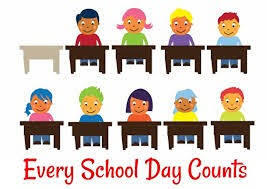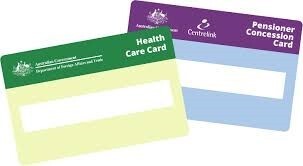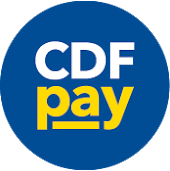Filter Content
Dear Parents and Carers
- Boys can wear shorts in Terms 2 and 3 but must wear the school tie.
- Girls can wear LONG grey socks with the tunic
- School beanie and scarf can be worn during Terms 2 and 3 (no alternatives)
TRIVIA NIGHT
Friday 23 June is the last day of Term 2. It is our Pizza and Pyjama Day. Please ensure the students wear something warm and appropriate should they have a PE on this day.
First Holy Communion 2023
Congratulations to 23 of our Year 4 students who received the Sacrament of First Holy Communion on the weekend at St Patrick’s church in Pakenham. We continue to pray for the remaining 19 students who received their First holy Communion on the weekend of 17 and 18 June.
A big thank you to parents and carers for supporting the students in their faith at this time.
Foundation to Year 2 Mass - CHANGE of DATE
Please note that we have had to change the Junior (Foundation to Year 2) Mass from Wednesday 14 June to Tuesday 20 June due to Father Janeesh’s availability. This Mass will now be held at 2.15pm and all families from Foundatio to Year 2 are welcome to attend. It will be held in the modular building.
Religious Education Curriculum Updates
This week I share with you the curriculum being covered and reported on in the first semester for Foundation.
During Semester One, Foundation students have learnt to make the Sign of the Cross to begin and end prayer. Students have explored various stories from the Bible and, through these stories, have been learning about how to be kind friends and show love towards others. Foundation students have been learning that they belong to different families, including their families at home, school and Church.
Learning in Year 3 - The Year 3 students have been learning and understanding more about Mary. Take a look at their drawings of Mary.
Please complete the Application for Leave During Term Form if your child is going to be absent for more than 3 school days. The form is below and can also be accessed via PAM in the Knowledgebank.
Here is the link for the St Clare's Parent Access Module (PAM)
St Clare's PAM
You username is the email address that you have registered with the school. The first time you log in we ask that you use the forgotten password feature to set your own password.
ALL parents must access PAM to receive up to date information and grant necessary permissions. Students will miss out on events if permission is not granted.
School Fees
Term 2 fees are now overdue. Please contact the school to arrange payment.
If you are experiencing financial difficulties please contact the school via finance@stclaresofficer.catholic.edu.au for a confidential discussion.
If you financial situation has now changes and you have a Pension or Health Care Card please let us know that this will impact your school fees payable.
On Tuesday 20 June the Victoria Police will visit our Year 5 and Year 6 Students
Children and young people receive education directly from influencers in their lives, including parents, carers, teachers and police.
The presentation will encourage critical thinking and learnings to prevent harm, to identify safe or unsafe situations and know when and how to seek help.
The presentations are delivered by State and Territory police to build positive engagement between children, young people and police, while equipping students with the knowledge and skills to be able to take actionable steps to maintain their safety at all times.
School TV: A SPECIAL REPORT: Vaping
Vaping is becoming a trendy pastime that is growing in popularity across Australia, especially amongst teenagers. It is the act of inhaling a vapour created by an electronic cigarette, or e-cigarette. Many teenagers are succumbing to peer pressure around this risk-taking activity due to the ease of accessing and hiding vapes. They are often cheaper than conventional cigarettes, making it more cost-effective and attractive to young people.
Although under 18s are not legally allowed to purchase any type of e-cigarette or vaping product in Australia, teenagers are finding ways to access them online. Australia has strict regulations in place for nicotine-containing products, and attempts are being made to regulate vaping and ban the importation of them. Many of the flavoured liquids associated with vaping, contain not only high levels of nicotine, but other potentially harmful additives. Many of these “e-liquids” contain chemicals that are likely to be toxic, that when inhaled or vaped repeatedly, can cause severe damage to the lungs.
Vaping is often marketed as being the “healthy” alternative to smoking. However, doctors strongly advise that if you do not smoke, then you should not start vaping. Most teenagers are unaware of the associated risks and potential impact vaping can have on their development and overall health. Parents are encouraged to discuss the dangers of nicotine addiction and include e-cigarettes in the discussion alongside alcohol and drugs.
This Special Report highlights the facts around vaping and e-cigarettes and what are the potential risks.
We hope you take time to reflect on the information offered in this Special Report, and as always, we welcome your feedback.
If you do have any concerns about the wellbeing of your child, please contact the school for further information or seek medical or professional help.
Here is the link to your special report:
https://stclaresofficer.catholic.schooltv.me/wellbeing_news/special-report-vaping-au
CDFpay is a secure, safe and efficient method for ordering and paying for items through school.
Below you will find instructions for setting up your CDFpay account both if you are an existing parent "already have a CDF pay account" or a new parent.
Here is the link to head to our school CDFpay shop St Clare's CDFpay Shop
How to Help Kids Stay Safe Online
Adapted from: https://www.esafety.gov.au/about-us/blog Office of the eSafety Commissioner
- Start the chat
It’s not possible to be at your child’s side every second of the day, so it’s important to talk with them about online safety issues to help develop their critical thinking and ability to make good choices. It’s also good to let them know they can come to you for help if they have any concerns. You may feel they know more about the latest technology than you do, but you have more life experience to guide them.
- With primary school aged children use online devices in the open living spaces at home to make parent supervision part of the expectation for your child.
- Take the opportunity to set some boundaries around when and where they can use devices like tablets, smart TVs and gaming consoles, to help limit potential tech tantrums — you could even fill in an Early Years Family Tech Agreement
- Screen free time before bed is important for good sleep. Consider charging devices in a central location at a regular time each night to allow an hour screen free before bed.
- While you are all at home more, it’s a great time to co-view and co-play with your kids, so you can understand what they are doing and experiencing online.
- Learn about the games, apps, social media and platforms they are using at The eSafety Guide, including how to protect their information and report inappropriate content or conduct.
- Use parental controls and safe search options
Parental controls can help block your child from accessing specific websites, apps or functions. They can also monitor your child’s use of connected devices and set time limits. But beware! You cannot always rely on them — they should be used in combination with other online safety strategies.
- Parental controls are available on most tablets, smartphones, computers, TVs and gaming consoles.
- You can also download family safety controls or buy robust filters out of the box.
- You can set up child-friendly search engines, or select safe search settings on digital devices, to help prevent your child from stumbling across inappropriate sites and content.
- Check smart toy settings
It’s surprising how many toys or devices can connect online these days, from drones and smart teddies to tablets and wearables. While they can be both entertaining and educational, they can reveal your child’s personal details and location — and allow other people to contact them without you knowing. You can help keep them stay safe by:
- setting strong passwords
- turning off location settings
- limiting the amount of personal information shared.
The eSafety Gift Guide has advice on what to check for and how to stay safe.
- Look out for unwanted contact and grooming
Unwanted contact is any communication that makes your child feel uncomfortable or unsafe, even if they initially welcomed the contact. It can come from a stranger, an online ‘friend’ or even someone they actually know. At worst, it can involve ‘grooming’ — building a relationship with the child in order to sexually abuse them.
You can help by:
- making sure their accounts are private — including chat functions on games
- encouraging them to delete requests from strangers and any contacts they don’t know in person
- checking in with your child as they use online devices in the open living spaces at home
- reporting and blocking anyone suspicious on a website or service
- remembering that if suspicious online contacts become aggressive or threatening you should contact your local police.
- Know the signs of cyberbullying
Kids who are bored by long periods at home can pick at each other, and that happens online too. So it’s important to keep an eye out for cyberbullying. It can include mean posts, comments and messages, as well as being left out of online group activities like gaming.
- Remember, when they are away from school, kids have less access to their usual support systems, including friends, teachers and counsellors.
- eSafety research shows that girls are more likely to be affected than boys and the person doing the bullying is generally someone they know from school.
- Watch out for signs such as your child appearing upset after using their mobile, tablet or computer, being unusually secretive about their online activities or becoming withdrawn.
- Cyberbullying can make social isolation worse and the longer it continues, the more stressed kids can become, impacting on their emotional and physical wellbeing.
What to do if your child is being cyberbullied
As parents, our first instinct may be to ban our children from social media, disable the wi-fi or turn off the data access. But this can actually compound the problem, making your child feel as if they’re being punished and heightening their sense of social exclusion.
There are four simple steps that can help minimise the harm:
- report the cyberbullying to the social media service where it is occurring
- collect evidence of the cyberbullying material
- if the material is still public 48 hours later, make a report to eSafety — we work with social media platforms to have the harmful content removed.
block the offending user.














